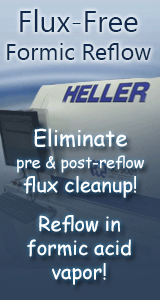Several points about your query are:
* TI�s solderability protection specification is a minimum of 3 u" of palladium over 40-60 u" of nickel plate over a <5u" palladium nickel strike over a <5u" nickel strike on a copper base metal.
* Many people require 3 to 8 u" of gold over nickel as part of their ENIG solderability protection. Palladium is much less dense than gold (12.0/19.3). So, your minimum of 3 u" of palladium is probably adequate to prevent oxidization of the nickel plate underneath. [It might be reasonable for your to pursue that idea from a different angle by questioning if the nickel was corroded before the over-plate was applied, if the plating is actually GT 3 u".]
* Palladium prevents of the nickel under-plate from oxidizing. During soldering, the palladium dissolves into the solder and then the solder joins to the nickel. The dissolution rate of palladium in solder is dependent on temperature.
Temperature �C | Pd dissolution rate into solder u"/sec|| 215 | 0.7||250 | 2.8
This indicates the temperature / time necessary to dissolve the palladium into the solder before a solder connection can be made to the nickel. [So, you might consider increasing temperature to a level that you feel your components will bear together along with decreasing your conveyor speed]
* In "Evaluation of Water Soluble and No-Clean Solder Pastes with Palladium Plated and Solder Plated SMT Devices", D Romm and N McLellan [1/93 SMT magazine] found that the solder paste formulation has a strong impact on contact angle of the solder joint. Palladium plated devices exhibited a greater sensitivity to changes in solder paste, however the performance trend of the pastes was similar for both lead finishes. At least one no-clean paste and at least one water soluble paste that they tested performed well for both palladium plated and solder plated devices.
* TI talks to palladium at http://www.ti.com/sc/docs/products/logic/package/palladm/index.htm
reply »
![]() I have recently come across a device which has a palladium o...
- Jan 29, 2001
by
I have recently come across a device which has a palladium o...
- Jan 29, 2001
by
![]()
![]() Several points about your query are:
* TI�s solderabilit...
- Jan 29, 2001
by
davef
Several points about your query are:
* TI�s solderabilit...
- Jan 29, 2001
by
davef
![]()







